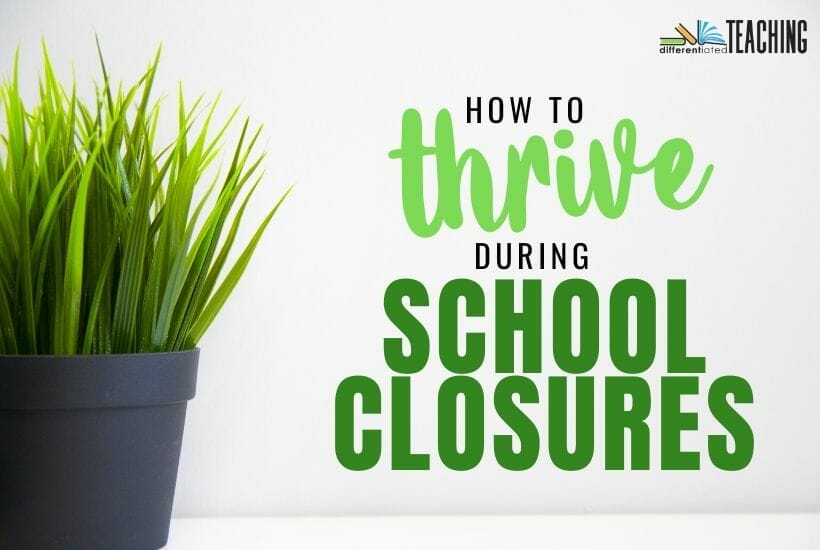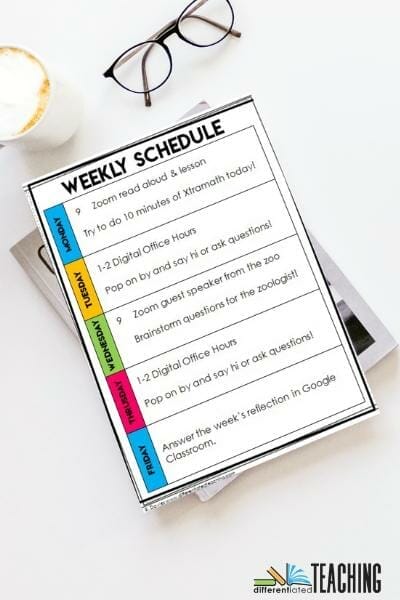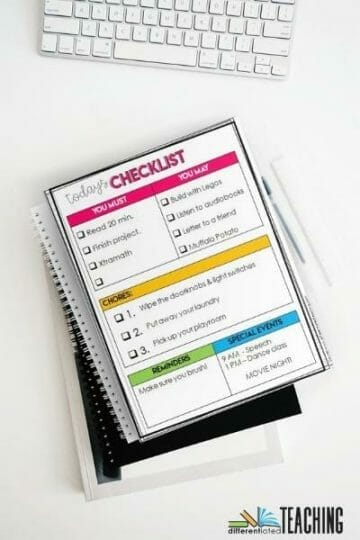Structured Home Learning: How I Created Our Flexible Homeschool Routine
This home learning thing is no joke! Of course, teachers have always had to be flexible, but this takes things to a whole new level. Avoiding overwhelm can be hard, but setting a schedule and creating routines can be a huge help in getting things back on track. Today I’ll share a few strategies that have helped my family keep it together during this challenging time.

How to successfully juggle school and home during school closures.
Teachers have been preparing for distance learning for a long time. Sure, you may have never expected it at this magnitude, but you are used to establishing routines, creating structures for your students, and being flexible in the daily classroom. Of course, it’s different during school closures, but you can still be successful and help our students (and parents) be successful too with these simple tips!
1. Establish a schedule as early as possible.
Most states and districts have set guidelines for what is required and what is recommended during distance learning. Some schools require online or e-learning platforms. Other schools require students to complete assignments. Some schools are still trying to figure out how to begin this process.
Whatever the guidelines give been given, start by setting a schedule for your classes. When and how will you be available to them? Approximately how much home learning should be expected each week?
As you begin to think about your schedule, focus on simplicity. Parents and students are dealing with lots of uncertainty. Giving easy-to-understand tasks that don’t take all day or require full-on support to complete can help bring the normalcy of learning to an otherwise challenging time without making the stress worse.
Consider using a simple template to create your class schedule for each day or by week. This is perfect to share that with students and their parents, and you can include any real-time lessons you’ll be teaching or specific skills or tasks to focus on.

If you’re not doing real-time meet-ups, consider giving your weekly activities or requirements via a checklist or bingo board format to make it easy for families to keep track of what they need to complete.
2. Set up an organization system.
Ultimately, we all hope to survive this mess and get back to normal. Until then, help your students and their parents stay organized. Send a planner template or daily checklist template for parents. This can help organize each day’s tasks. If students have planners, they can use those in the same way.
If you don’t already have something in place, this doesn’t have to be super structured into specific time blocks. Families are all doing different things right now and offering them a flexible format like the one below. You can grab a fillable version like this free by entering your info at the bottom of the page.

You may also want to use teacher organizational tools for yourself! A simple fillable checklist or grade sheet is a great way to keep track of student work during distance learning.
3. Stick to your routine
While your thoughts about “normal” are a distant memory and an unrelatable future, it’s just like any other extended break. Once you go back, it’s going to be difficult, and you’ll face a few struggles as you work to get back into your routine.
Keeping your routine can help you avoid the funk that so many people are getting buried in. Get up at the same time.
Eat your usual breakfast.
If you have extra time, fill it with something meaningful, but don’t throw your routine out. Routines allow us to be focused and accomplish tasks.
4. Create the structure you want for your life.
You have plenty of time to effectively adjust your habits. Thinking of implementing a healthy diet? Start now. Time to start exercising? Start now. Create the structure that you would want in your life if you had time.
We walk through life often living in our “what ifs” but now is the time to live out the what if! What if you didn’t have a commute to work?
How about if you didn’t have to report to work at 7 am?
What if you didn’t have to administer standardized tests or if you didn’t have to hold my students accountable for perfection?
Now is the time to challenge those what-ifs.
5. Be flexible.
Your online communication systems are going to be overwhelmed with everyone trying to use online streaming. When you need it, your webcams and microphones will inevitably stop working. The same tech hassles you dealt with in the classroom are going to be magnified ten-fold in a digital learning environment. Everyone has to be flexible with one another during this time, but you also have to be flexible with yourself. Give yourself some grace.
If you mess up a class, oh well! You and your students will survive, and you’ve learned something for next time. If we tell our students it is okay to make mistakes, we have to be willing to give ourselves the same leeway.
Teachers want things to go well, but once you accept that not everything is going to go as planned, you can breathe a little more and enjoy a lot more. You might even be able to remember why you became a teacher in the first place.
Look at the bright side…
While these changes have been a challenge for many of us, there is a positive side. How often have you been able to use the restroom when you need to and eat lunch when you are supposed to? If you’ve got kiddos at home, you have the rare opportunity to give them additional one-on-one or small group attention. Enjoy that learning and growing time with them!
Schedules help everyone stay focused and accomplish tasks. Figure out what your new (albeit temporary) norm is, establish your routine, structure your days, and be flexible to ensure you, your students, and their parents will be successful.






